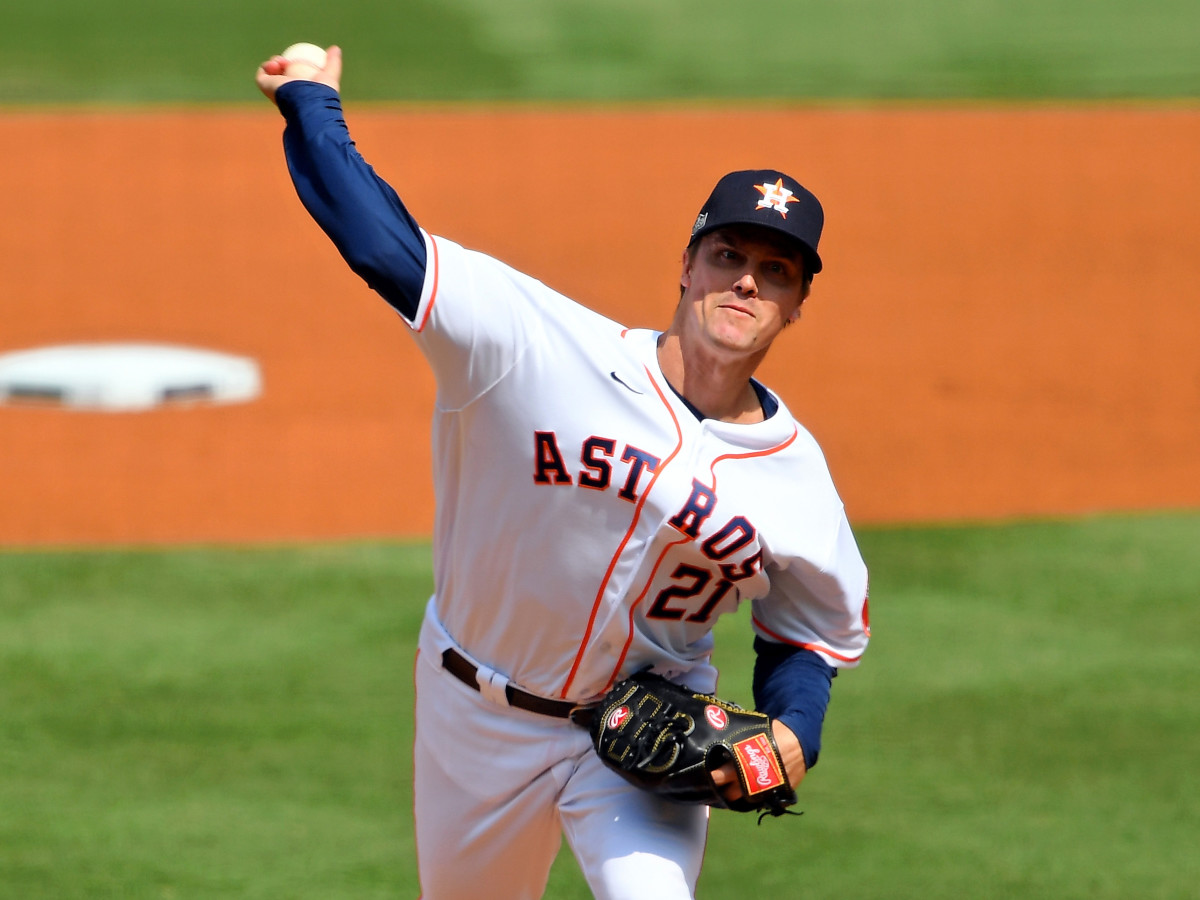The Theories of Zack Greinke Giving Signs, Ranked
In the second inning on Thursday—in Houston’s decisive ALDS win over Oakland—Zack Greinke did something that he has been doing all season: He gave his own sign with a runner on second. He flashed two fingers, and then threw a slider to Ramón Laureano, who promptly took him deep.
Keep the signs coming Greinke 😂pic.twitter.com/vmZj9w8P3C
— A's on NBCS (@NBCSAthletics) October 8, 2020
Greinke has done this for months now. With a runner on second, he’ll show a sign himself, instead of leaving that responsibility to his catcher. (Once, rather than signaling with his fingers, he simply called the pitch out loud.) Greinke’s claimed that he does this to speed the game along: “I don’t like taking a long time with a man on second base especially,” he told MLB.com’s Brian McTaggart in August. “I’m trying to find a way to speed that up.” But Thursday’s sign, as you might expect, caught more attention than his past examples. It’s October. It was a pivotal game. And it resulted in a home run. (Not that it mattered, anyway, as the Astros beat the A’s, 11–6.)
Greinke has never clarified on the record just what, exactly, he is signaling: Is it the pitch, just as the catcher would otherwise be signaling to him? Is it the number of the sign in a given sequence rather than the sign itself? Is it a trick? Is it anything at all? Naturally, after such a prominent use of the technique, theories abounded. So we ranked them in order of absurdity, from least to most ridiculous:

5. The Sign Is For The Sequence
First, we have our least absurd theory, and our most obvious. With the prevalence of sign-stealing—yes, go ahead, make your joke about the Astros—it’s common for teams to rotate between several different sequences of signs when a runner is on. When Greinke says that he likes to work quickly with a man on base, this is an essential factor, as toggling between sequences can tack on some time. By flashing two fingers, then, he could be calling for them to use their second set of signs, and he wouldn’t be giving any obvious information to the hitter out in the open.
And, beyond that, there are a few points to suggest that this specific example was for a sequence rather than a pitch. First, two fingers typically mean a curveball, not a slider. (And Greinke has plenty of differentiation between his curve and slider—no slurviness here. In fact, there was a curve just prior to the slider in question, and the difference between them was clear, 70 mph versus 85 mph, which should put to rest any idea that maybe it was supposed to be the former instead of the latter.) Second.... Why would he explicitly show the hitter the pitch? C’mon.
4. The Sign Is Actually A Math Problem
This is a slight variation on No. 5. He’s still not explicitly signaling the pitch. But he’s giving information that can be used to figure out the pitch. Nationals rookie pitcher Sterling Sharp shared this one on Twitter:
Im guessing Greinke is adding/minus off pitch. If the original sign was a FB, 👇🏾 Greinke gives 2 fingers up to tell Maldonado add 2 fingers to the sign he put down which would be “3” a slider. Instead of Greinke having to shake until Maldonado puts that down. https://t.co/em7OG2ZU85
— Sterling Sharp (@SterlingSharp) October 8, 2020
This would speed the game up in a way that should be difficult to break down. The catcher puts down one finger for a fastball. If Greinke puts up one finger, it’s a curve, and if he puts up two, it’s a slider. The final call would rest with him—no back-and-forth to shake off. An opponent could pick up on it only if he has eyes on the catcher and Greinke. Wacky? A little. But it makes sense.
3. The Sign Is For The Pitch
Okay, but what if the sign is for the pitch? Sure, it sounds ridiculous. The potential for deception is one of the greatest tools available to a pitcher. Why give it up by telling the hitter exactly what you’re going to throw ahead of time?
...Because you’re Zack Greinke. This is an ideal method to screw with a hitter; you know that you’re hard to hit and the guy at the plate knows that you’re hard to hit, so why not mess around with him by laying all your cards on the table to see if he’ll still fail, anyway? It’s the ultimate display of disrespect! This curve, this weirdly slow curve, is so insane that I’ll tell you it’s coming and I still don’t think you’ll be able to hit it. Absurd! Highly unlikely! Also quite fun to think about.
2. The Sign Is A Decoy
Or the sign is an outright decoy, and Greinke only signals curve when he’s going to throw a slider, and only signals fastball when he’s going to throw a changeup. Does he mean it? Does he not? Does he mean anything? This is the next level of playing mind games. Brilliant.
1. The Sign Means Nothing
Two fingers mean a breaking ball, unless, of course, they mean something else—unless they are a sign for a different group of signs—unless they are just two fingers—unless they are this, from Michel Foucault:
Things themselves become so burdened with attributes, signs, allusions, that they finally lose their own form. Meaning is no longer read in an immediate perception, the figure no longer speaks for itself; between the knowledge which animates it and the form into which it is transposed, a gap widens. It is free for the dream.
Greinke lives in the gap. He is there, inside the dream, pitching as he wants.
